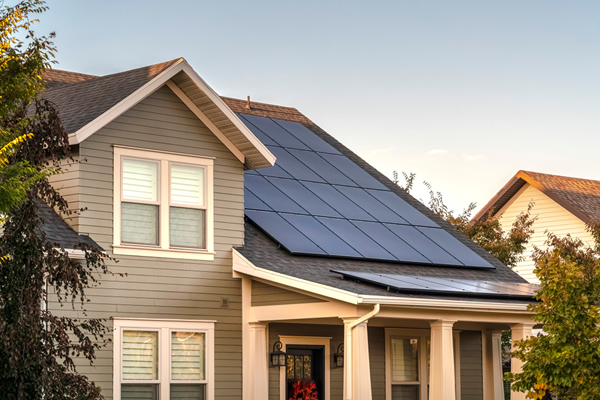Combining Passive Solar Design With Roof-Integrated PV
Author: Michael Russo | July 1, 2021
Roof-integrated solar using the latest, super high-efficiency photovoltaic (PV) panels continues to brighten up the steep slope roofing market. Although these active solar systems are generating record amounts of electricity, they can still benefit from the passive solar design techniques first used widely in the 1970s.

If contractors want to get the most out of an installed solar panel system, they should consider using passive design strategies.
What Is Passive Solar Design?
Today, the passive solar design uses the basic elements of a building — the walls, roof and windows — to control the amount of the sun's energy that is absorbed or lost. These techniques often rely on the design of the building and the types of materials used to construct it rather than active mechanical systems.
Insulation, windows, southern exposures and reflective roofing materials are all "passive" ways to greatly enhance an active, roof-integrated solar set-up. On a new build, designing the building orientation to optimize roof surface exposure to the sun is one strategy. For existing roofs, concentrating panels on roof areas that have optimal solar exposure and are not shaded by surrounding structures or trees helps to maximize the solar energy gathered.
Some passive systems do use a small amount of conventional energy to control dampers, shutters, night insulation and other devices that enhance solar energy collection, storage and use.
Sizing Up a Photovoltaic System
After incorporating passive solar design techniques, contractors size up a solar job by multiplying the watts required by appliances and other electrical devices by the number of hours the homeowner expects to use them. The active photovoltaic systems should supply all the kilowatt-hours for these applications.
Today's top-of-the-line solar panels are not only more powerful than older products, but they also feature a sleeker appearance. They are designed to provide a good-looking, low-profile alternative to typical rack-mounted solar panels, which are typically drilled through the roof's shingles. These modern solar solutions integrate directly with the roofing system and are part of the primary water-shedding layer. Robust flashing and a perimeter shield further reduce the risk of leaks and avoid animal intrusion round out the package.
Installation Challenges
Photovoltaic applications will remain a challenge for roofing contractors who are not partnering with a solar specialist. Acquiring customers is also a significant "soft cost" for roofers who want to offer solar, according to the Solar Energy Industries Association. Fortunately for newcomers, the top roofing suppliers have successfully packaged PV module assembly, underlayments and flashing into a cohesive set of instructions.
That said, the Balance of System (BoS) components that make up the remainder of the installation will require an in-house or outside solar specialist. These components include the rooftop junction box, conduit, cables, disconnect switch, meter, monitoring system and inverter.
Key Tips to Remember
If your roofing company is ready to install passive and active solar components, remember a few key tips for electrical safety:
- Always use factory-certified PV cables instead of field-crimping PV wire and connectors.
- Do not direct artificially concentrated sunlight on the solar array.
- Do not cut or modify a solar module to accommodate roof projections.
- When installing over existing roofing, all the materials in the plane of the roof with the solar array should be removed and replaced with a new product.
- Where possible, build the solar module assembly on the ground and hoist it up to the roof.
- Ensure that module wiring does not come in contact with metal trim or debris guards. Follow the cables' minimum bend radius, and don't over-tension wires.
- Installing circuits, switches, tie-in and initial system startup must be performed by a licensed electrician.